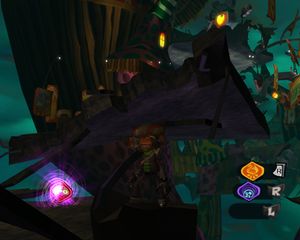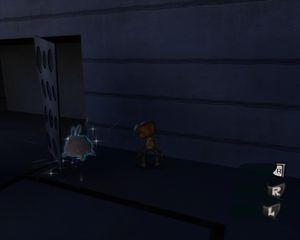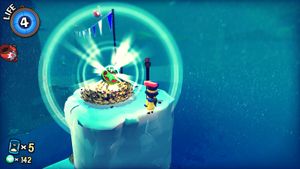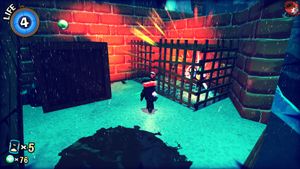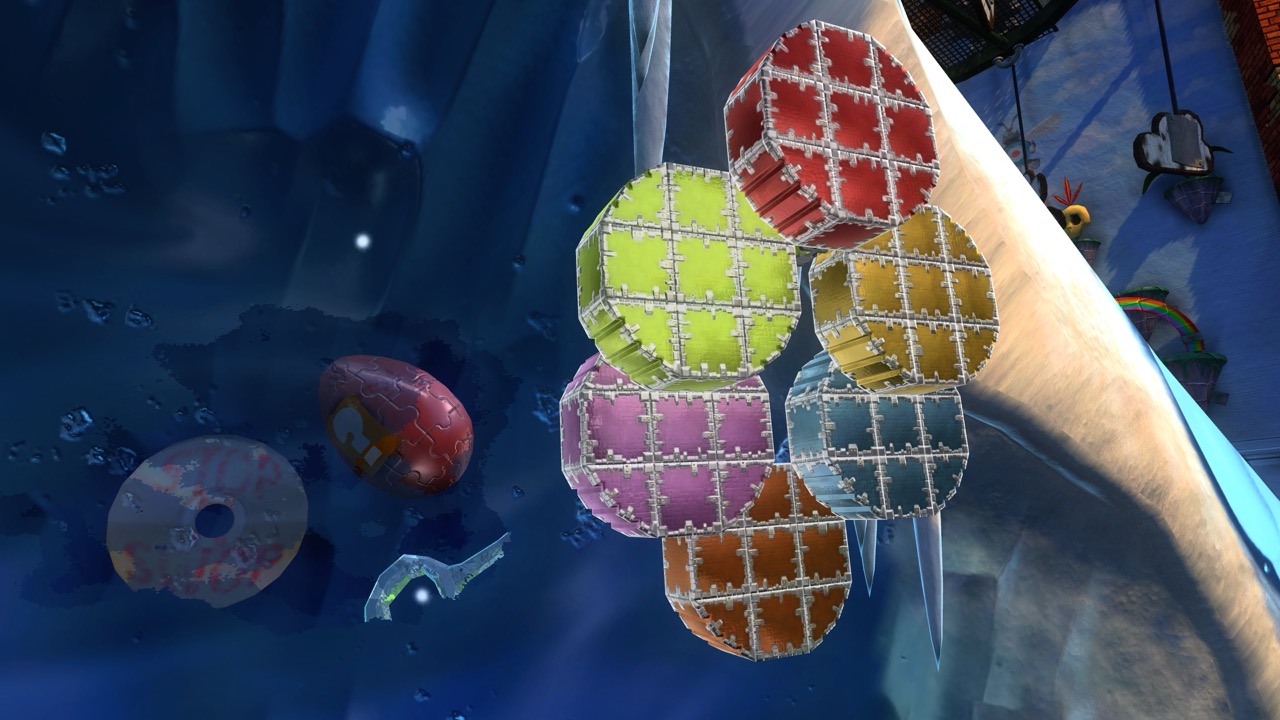
Or - How I Learned To Stop ('N' Swop) Worrying And Love Banjo-Tooie
We've gone back and forth over the years whether we prefer Banjo-Kazooie or Banjo-Tooie. Kazooie as the tighter, more focused game; Tooie as a significantly more exploratory experience with higher highs, but significantly lower lows.
Several months ago, a friend invited us to start doing Archipelago runs with them and some other critters on a Discord server. Archipelago is a multiworld randomizer - it takes the collected items of all players and distributes them between everyone. For example, completing a level in Yoshi's Island might award an Ocarina of Time player their Hookshot. The Hookshot might allow for getting access to treasure chests that contain the item needed to access one of Kingdom Hearts II's levels. That level might contain a basic stage element for Yoshi's Island that allows for completing the level with a perfect score, which is needed for something else.
Logic is applied with these item distributions so that everything needed to beat the game should be collectable (the Hookshot should not be in a chest that requires the Hookshot) - but they are usually not obtained in anywhere near the right order.
This is particularly good for a lot of open ended games with multiple ways to approach things - a lot of Metroid and Zelda games are popular choices for any randomizer because of their freedom of approach and for how much can be done even in a standard speedrun with the wrong items [1]
And in that environment, we've come to really appreciate what Banjo-Tooie did a lot.
The Rare Archipelago
Banjo-Tooie isn't currently distributed with the main Archipelago package, it's available separately on Github. Like most Archipelago worlds, it's a community effort, with a dedicated team figuring out memory addresses and how they translate, turning that into a lua script that interacts with emulators, a ROM hack, and something not seen too often, it's actually playable on original hardware with a connector app.
Deciding Factor
What makes randomizers fascinating to us in general is the combination of interesting decisions with the wrong set of tools, and at least in 3D, few games we've tried do that quite as well as Tooie.
Banjo-Tooie is a sprawling example of a 3D platformer. It is filled with interconnected levels, and abilities that change the way you navigate through them or between them.
Comparing a lot of other 3D platformers, they can have interesting decisions on an individual level basis - for example, in A Hat in Time, I drew a DLC level that expects you to have all abilities as level 2, and made the choice to learn part of the speedrun route to avoid waiting around for those abilities to be sent.
But the levels themselves are isolated and can only be visited in the order dictated by what's been unlocked and the constraints of the hub.
Tooie, on the other hand, presents a lot of ways to get where you're going. There are at least two routes into the majority of levels.
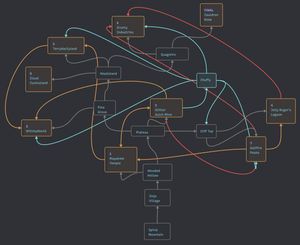
Grey boxes are the hub and grey arrows connections from it.
Orange boxes are levels, and orange arrows are intended routes between levels.
Cyan represents levels that can be accessed by Chuffy the train once he's unlocked and the individual train stations are found somewhere in the multiworld.
Red arrows represent intended one-way visits to parts of the level that don't connect to the rest.
Some of these routes are meant to be one-way to a small isolated area rather than the rest of the level, and that's where Tooie's additional point of interest comes in - as a Rare N64 game, there are a large amount of well documented glitches (even if not quite as many as Donkey Kong 64, where the majority of walls do not matter), and a fair few are really easy to perform as soon as you know how they work.
For example, access to Glitter Gulch Mine is meant to require a move to grab ledges, and for the grate blocking the level entrance to be unlocked - but providing starter moves haven't been randomized, both of these requirements can be bypassed with a ground pound. [2]
The end of all runs will look broadly similar from the requirements for the final boss, but those requirements are broadly speaking things that will be useful throughout the whole game, and nowhere near as strenuous as something like Psychonauts, which requires multiple otherwise useless items to reach one of the final areas. [3]
Time-to-Check
Tooie is known for a ridiculous amount of sidetracks for some of its main collectibles - often requiring a series of jaunts into other levels or multiple character swaps or both.
But Tooie's Archipelago implementation significantly lessens the blow by making the vast majority of the minor collectibles part of the item pool as well - making it have a really low time between finding something new. Even if after getting to a new level, the main collectibles are gated off by access to abilities or areas, a lot of the minor ones will be accessible - and no priority or importance is given to the main ones.
Contrast the spiritual successor to Banjo-Kazooie and Tooie, Yooka-Laylee. Yooka's current Archipelago implementation only affects the main collectibles and moves - and as such, a. it takes absolutely ages between sending new checks (and Yooka is a game where the time between most main collectibles was already significantly worse than Tooie, at least in our opinion), and b. it takes away a lot from the decision tree.
Preserving the Mystery
At least as of version 4.0.1 of the APWorld [4] - regardless of what an item actually is when collected, it will still appear as it originally did in Tooie. In contrast, Psychonauts and A Hat in Time both have items either appear as the correct item if it's for that game, or a display with a substitute (Mr. Bun for Psychonauts, the Archipelago logo for A Hat in Time) if for someone else.
This is more convenient - and in Psychonauts' case, it's pretty much required from how some of the collectibles in that game work - but it does lead to entire classes of collectibles being skipped after a certain point is reached. I kind of enjoy the encouragement to continue collecting of not knowing - even as the end of the game is approached, any miscellaneous item could still be an important one.
...of course, that is just the collectathon gremlin in us talking
Quality of Life
Playing in Archipelago tones down a lot of the frustrations that would have come with the base game, for the most part.
There's a cheat code that gives Banjo double speed, which is great for navigating large worlds, but less great when you have to do something with precision (particularly given the differences in sensitivity and deadzones between the N64 controller and modern controllers). In the original game, toggling this off would mean going back to level 1 to the place where you enter cheat codes, and then navigating back (slowly) to wherever was giving you trouble. Archipelago puts this on holding L and pressing a D-pad direction, easy to toggle just where you need it.
Similarly, a lot of backtracking is themed around the idea of swapping characters between Banjo & Kazooie, the two individually, the things they can be transformed into, and Mumbo Jumbo - modern versions of the Archipelago pack move this to a button combo too, as long as you've unlocked that character in this level naturally. It isn't quite as transformative as the Donkey Kong 64 equivalent, but it is helpful in speeding up parts of the game which might be unique challenges in a first playthrough but that are just tedious on replays.
And much like every other Archipelago game, you can choose locations that should not have important items - which means the two most controller destroying items in the game can be completely skipped, if you so choose. There's also a Poptracker pack with included maps, which makes it substantially easier to remember where you've been and what's left to get - which again, tones down some of the original game's worst excesses.
Final Thoughts
Archipelago is a great way to parallel play with friends; everyone playing their favourite (supported) game in the way they want to, celebrating everyone's wins together, playing co-operatively without co-op. And chances are if you're a child of the 90s or 2000s, one of your favourite games might be supported, whether that's through the main Archipelago site or through downloadable projects.
I've given a lot of praise to Banjo-Tooie here for accidentally being perfect for the format, but the more important thing is it being a game you know well to start with (among other things, Tooie skips cutscenes and character introductions throughout). A lot of the games mentioned throughout this article are great in Archipelago [5], they just haven't quite transformed in the same way for us. Tooie has gone from a game we like but could only really stand replaying once every 5 years or so, to a game we actively look forward to the next time we revisit. And the idea of Stopping 'n' Swopping items between games... it's thematically appropriate too.
There is one slight problem with all of this - basically everything here needs either Windows or possibly significant tweaking. Very few things about Archipelago work on Mac without recompiling, and at least of the last time we checked, the N64 core for BizHawk doesn't work on Linux, failing to let you bypass the title screen (other cores are fine, just not N64). Yooka-Laylee uses the BepInEx DLLs common across many games using Unity, which don't work under Proton when we tried them. Psychonauts has a native Linux port... but the Astralathe modding framework needed to get it running in Archipelago is Windows only. A Hat in Time is the main non-emulated game we've tried where the instructions just work on Linux; the native Linux port still has the original game's mod framework even on the downpatched version required.
That does create problems for us about decisions what to do once we hit Windows 10 end of life in October, but for now, it is what it is.
Now, if only it was possible to play Nuts & Bolts in a similar way...
Further reading
- Banjo-Tooie's Grunty Industries - Designing For Emergence - Grunty Industries is the level probably most affected by not having the right set of tools and where glitches can have most impact. It's a complex knot that can be unpicked in a completely different way to the intended one.
Footnotes
Such as playing your sword like an ocarina. ↩︎
Before anyone comments, yes, we know it's called the Beak Buster; we're trying to stick to generic terminology through most of this. ↩︎
Granted, this also has a glitch to easily bypass it. And also, there are alternate win conditions as an option that do not require visiting the final areas at all. ↩︎
I have a suspicion that now that Banjo-Tooie has moved to using a ROM hack rather than just a script running in the emulator, this could be amended in future versions. ↩︎
Not Yooka-Laylee, unfortunately. ↩︎
